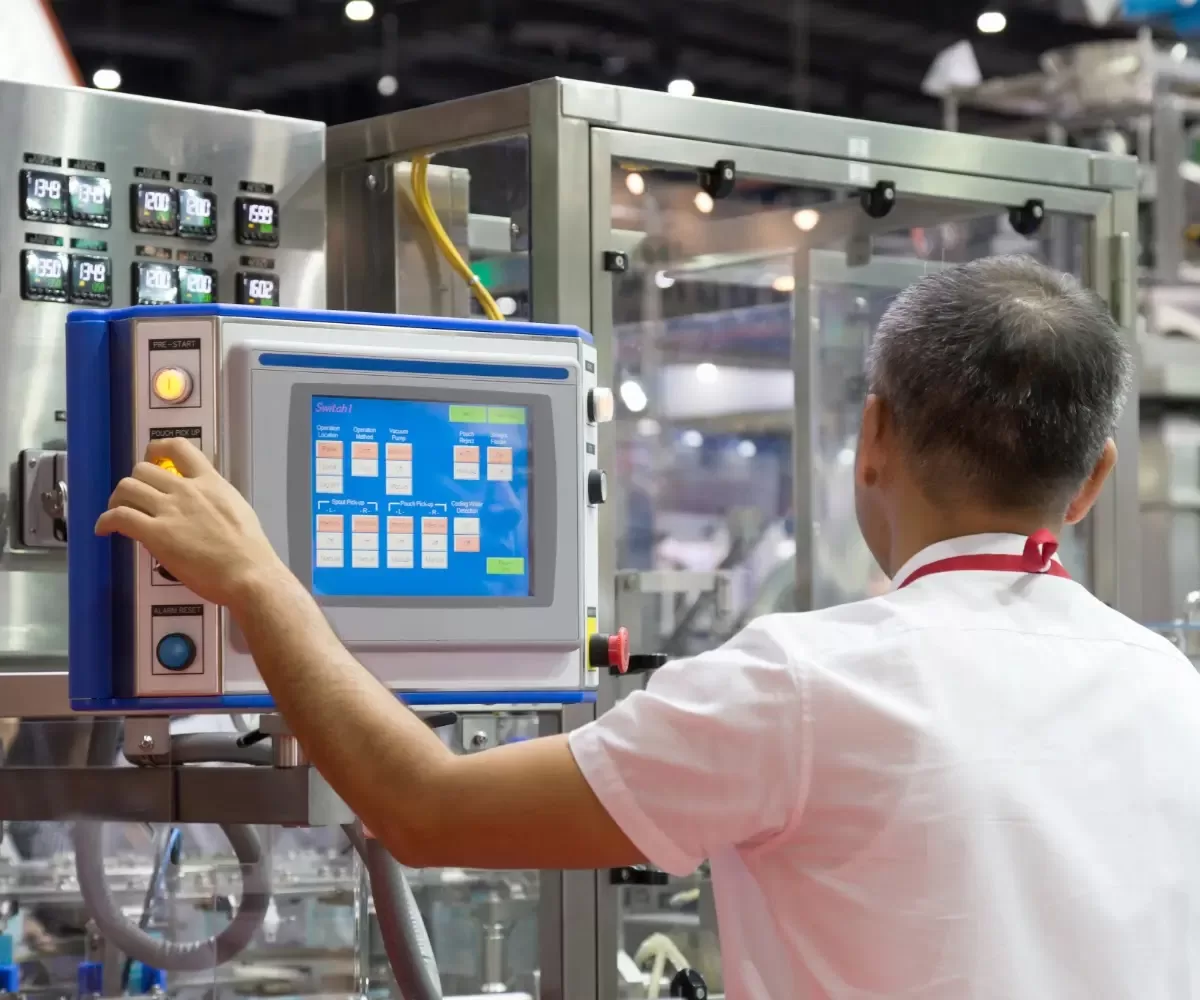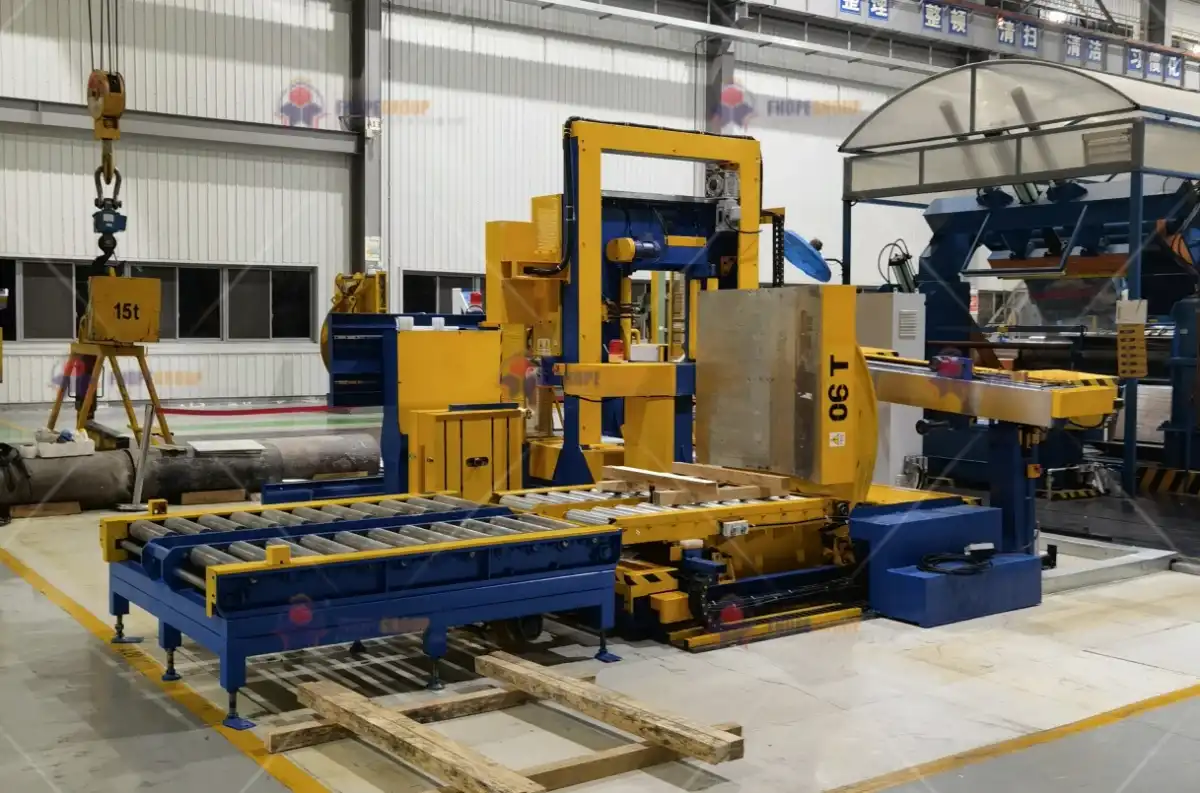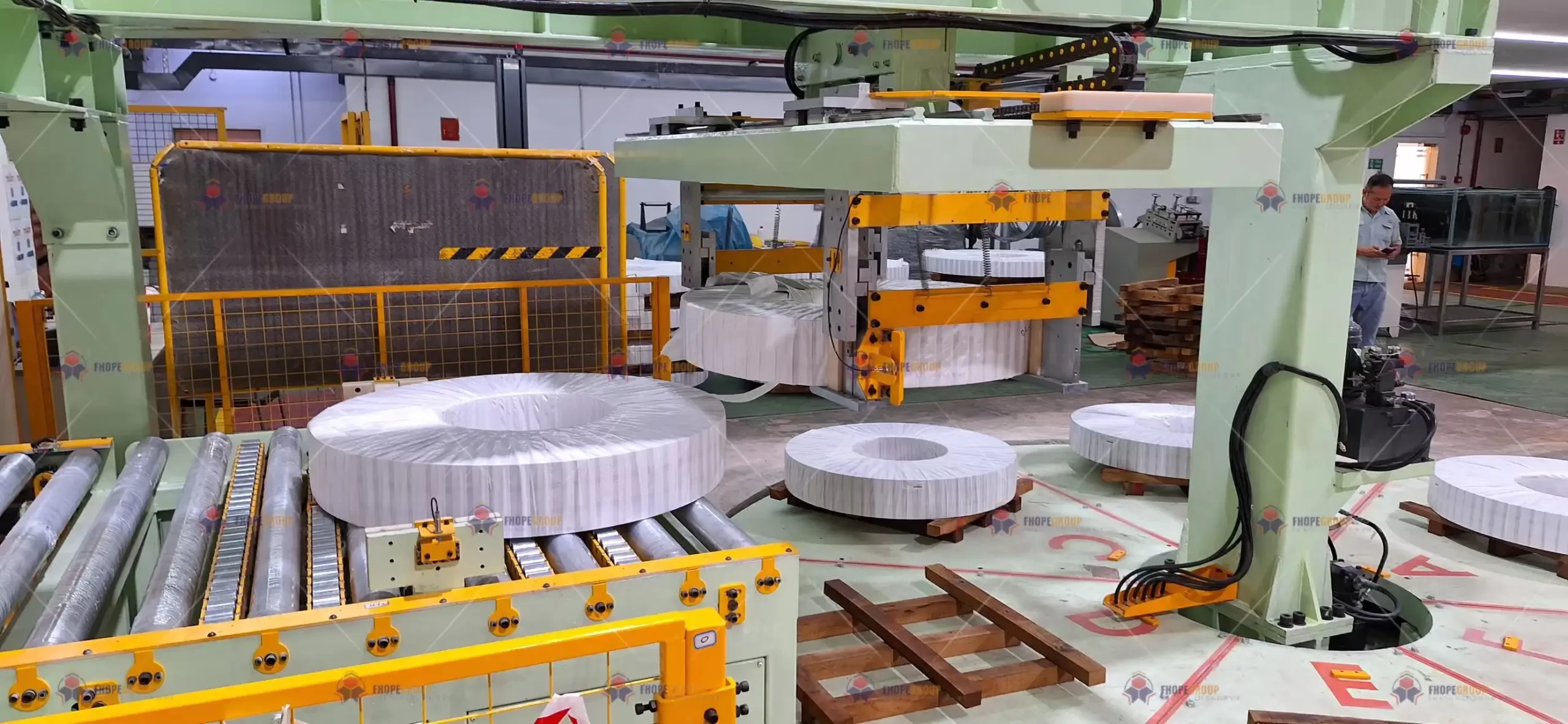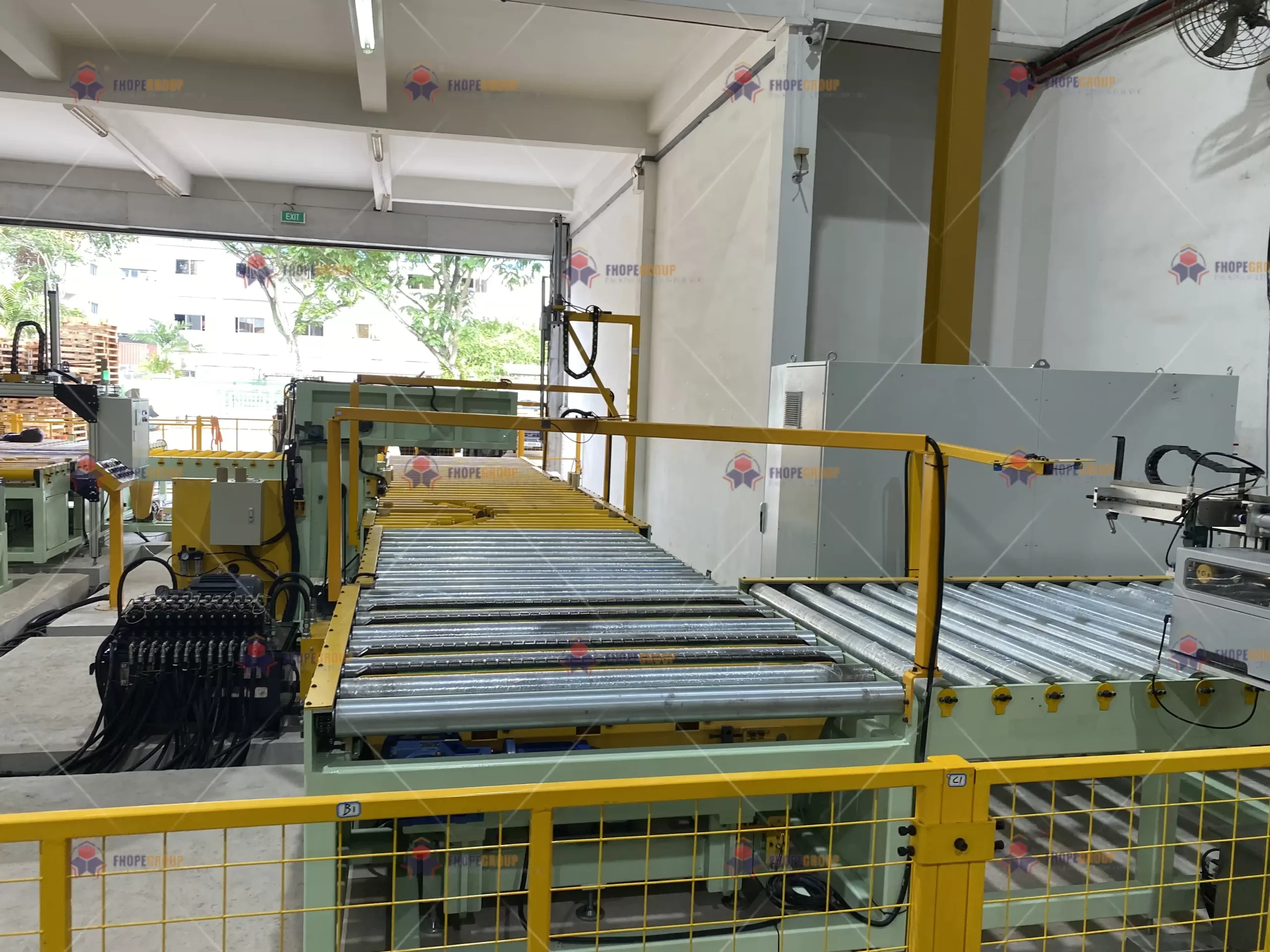Are you running a steel or aluminum mill in Malaysia? You probably feel the constant pressure. The global market is tough. Customers demand perfect quality. And operating costs, especially for labor and materials, seem to only go up. I see it all the time. Good companies with great products get held back by one crucial, often overlooked area: their coil packing line. Manual packing is slow, inconsistent, and can lead to product damage during shipping. This eats into your profits and, worse, your reputation. But what if you could turn that final step of your process into a source of strength?
Smart coil packing automation is rapidly being adopted by steel and non-ferrous producers across Malaysia, from the industrial parks in Johor Bahru to the manufacturing hubs in Penang. This shift is happening for a clear reason: it solves the core challenges of cost, quality, and efficiency. By implementing automated systems for wrapping, strapping, and handling, these mills are not just replacing manual labor. They are building a more reliable, faster, and more profitable packaging operation that protects their valuable products and strengthens their competitive edge in a demanding market.

This move towards automation isn't just a trend; it's a necessary evolution. I've walked through countless factories in my career, first as an engineer and now as a factory owner myself. I've seen the difference it makes firsthand. It’s the difference between constantly dealing with customer complaints and getting repeat orders. It’s the difference between struggling to meet shipping deadlines and having a smooth, predictable output. So, let’s look closer at why this momentum is building and what it could mean for your own operations.
Why is manual coil packing no longer enough for Malaysian steel mills?
For years, manual packing was the standard. It seemed good enough. But in today's market, "good enough" can put you out of business. Your team is working hard, but they are dealing with heavy coils and bulky packing materials. This manual process is inherently slow and creates a bottleneck, limiting how much product you can ship out each day. The real problem, however, is inconsistency. One worker might wrap a coil tightly, while another, at the end of a long shift, might wrap it loosely. This variation is a recipe for disaster.
Imagine a perfectly good steel coil, worth thousands of ringgit, leaving your mill. But during its long journey by truck or sea, the loose packaging allows moisture to seep in, causing rust. Or, the packaging tears, leading to scratches and dents. Your customer receives a damaged product. Now you have to deal with claims, returns, and potentially lose a valuable client. All because of that final, manual step. This is a painful and expensive problem that I've seen happen too many times.
Manual coil packing is no longer sufficient for modern Malaysian mills because it cannot deliver the consistency, speed, and safety required to compete effectively. It leads to high, unpredictable labor costs, creates a major production bottleneck, results in inconsistent package quality that causes product damage and customer claims, and poses significant safety risks to employees. Automation directly addresses and solves each of these critical issues.

When I started my journey as a young engineer, I spent a lot of time on the factory floor, watching the packing crews. I saw their dedication, but I also saw the challenges. Let's dive deeper into the specific reasons why the old way of doing things is holding businesses back.
The Problem of Inconsistency
Human hands, no matter how skilled, cannot replicate the exact same motion every single time for eight hours a day. This is the core issue with manual packing. The tension of the stretch film, the number of wraps, the placement of protective materials—it all varies. This inconsistency has a direct financial impact. Too little material and the coil is vulnerable. Too much material and you are wasting money on every single coil. An automated wrapper applies the exact pre-set amount of film with the perfect tension, every time. This means your product is consistently protected, and your material costs are controlled and predictable.
| Metric | Manual Packing | Automated Packing | Impact |
|---|---|---|---|
| Film Tension | Inconsistent | Precisely Controlled | Consistent load security |
| Material Usage | Variable, often excessive | Optimized and minimal | Lower consumable costs |
| Package Quality | Varies by worker/shift | Uniform and professional | Reduced damage, better brand image |
| Cycle Time | 10-15 minutes per coil | 2-3 minutes per coil | Increased throughput |
The True Cost of Labor
The cost of a manual packing team is not just their monthly salary. You must also account for recruitment, training, benefits, and overtime. Worker turnover is another hidden cost; every time an experienced worker leaves, you lose their knowledge and have to invest in training a replacement. Then there is the cost of human error. A misplaced label or an improperly secured strap can lead to major logistical problems down the line. Automation reduces this dependency. You still need skilled supervisors, but you eliminate the costs and variables associated with a large manual labor force, transforming an unpredictable operational expense into a stable, manageable one.
Safety, a Non-Negotiable Priority
Handling steel coils and large rolls of packing material is physically demanding and dangerous work. Manual packing exposes workers to risks of back injuries, cuts, and more serious accidents involving moving coils. In Malaysia, like everywhere else, workplace safety standards are becoming stricter. An accident not only has a profound human cost but can also lead to investigations, fines, and operational shutdowns. Automated systems take the worker out of harm's way. The machine does the heavy lifting, wrapping, and strapping, creating a much safer working environment. This isn't just good for your team; it's good for your business, ensuring compliance and reducing the risk of costly incidents.
What specific automation technologies are mills in Johor and Penang adopting?
You have decided that automation is the way forward. But what does that actually mean? The world of machinery can be confusing. You hear terms like "turnstile," "vertical wrapper," and "PLC integration." It can feel overwhelming, and making the wrong choice is a costly mistake. I remember one client who bought a standalone wrapping machine without considering how it would connect to the rest of his line. He saved some money upfront but created a new bottleneck that frustrated his team and limited his output. He had a machine, but not a solution.
The key is to think of it not as a single machine, but as an integrated system. Successful mills in Malaysia are adopting a holistic approach. They are investing in solutions where each piece of equipment "talks" to the next, creating a smooth, efficient flow from the end of the production line to the loading bay. This creates a truly "hands-off" process that is both fast and reliable.
The most effective automated packing lines being adopted in Malaysia integrate several key technologies. These typically start with automated coil loading systems like turnstiles or coil cars. The core of the line is a high-speed orbital wrapping machine, either vertical (eye-to-sky) or horizontal, that applies stretch film. This is followed by automated through-the-eye and circumferential strapping machines for maximum security. Finally, robotic systems for labeling, weighing, and palletizing complete the process, ensuring the coil is fully prepared for shipping without manual intervention.

Understanding these components is the first step to designing a line that fits your specific needs. Let's break down the most common technologies and the role they play.
The Heart of the System: The Automatic Orbital Wrapper
This is the machine that does the primary job of protecting your coil. There are two main types:
- Vertical (Eye-to-Sky) Wrapper: The coil sits on its side on a conveyor. A ring travels around the coil, wrapping it with stretch film. This is excellent for stability and is very common in high-volume steel mills.
- Horizontal Wrapper: The coil lies flat (eye-to-the-side). The wrapper moves around the outside diameter. This is often used for smaller coils or when stacking is required immediately after wrapping.
Modern wrappers do more than just spin. They have features like automatic film clamping and cutting, which means an operator doesn't have to manually attach and cut the film for each coil. They also have precise tension control systems. This feature alone can save you thousands of dollars a year in stretch film by preventing overuse while ensuring the wrap is tight and secure.
Creating a Seamless Flow: Upstream and Downstream Equipment
A great wrapping machine is useless if you can't get coils to it and away from it efficiently. This is where handling automation comes in.
- Turnstiles and Coil Cars: These are the entry points to your packing line. A turnstile can hold several coils from the slitter, feeding them one by one into the packing line. A coil car is a powered trolley that picks up a coil and delivers it to the line. This equipment prevents backlogs and ensures the wrapping machine is never waiting for a product.
- Conveyors: These are the roads of your packing line, moving the coil from one station to the next—from wrapping to strapping to weighing—without any manual pushing or forklift intervention.
- Coil Tilters: Often, a coil comes off the production line in an "eye-to-the-side" orientation but needs to be "eye-to-the-sky" for wrapping or shipping. An automated tilter does this heavy and dangerous job safely and quickly in seconds.
The "Smart" in Smart Automation
This is what elevates a good line to a great one. The "brain" of the system is the Programmable Logic Controller (PLC). It coordinates all the different machines to work together perfectly. The operator interacts with the line through a Human-Machine Interface (HMI), which is usually a simple touchscreen. From the HMI, they can select different packing "recipes" for different customers or product types. This system also collects valuable data—cycle times, material consumption, number of coils packed. This information can be fed into your factory's main planning system, giving you a clear, real-time view of your packaging operation's performance. This is the first step towards a fully digitalized factory.
How does smart automation directly impact a steel mill's bottom line?
As a business owner, every investment must answer one question: "What is the return?" A new, shiny automated line looks impressive, but if it doesn't make your business more profitable, it's just a very expensive piece of metal. You face constant pressure to reduce costs and improve margins. You worry that a large capital expenditure like an automated packing line might take too long to pay for itself, especially when the market is unpredictable.
This is a valid concern. I've sat across the table from many CEOs who have this exact same hesitation. They see the operational benefits, but they need to be convinced of the financial ones. The anxiety is that you'll spend a lot of money and the promised savings won't materialize, leaving you with a costly machine and the same old financial pressures. But a well-planned automation project isn't an expense; it's a high-return investment.
Smart automation directly and positively impacts a steel mill's bottom line in several measurable ways. It drastically reduces direct labor costs, minimizes the waste of expensive packaging materials like stretch film and strapping, and increases throughput, allowing you to ship more product with the same facility. Crucially, it also slashes the high costs associated with product damage claims and customer returns, leading to higher net profits and a strong, predictable return on investment (ROI).

Let's move away from general ideas and look at the specific numbers. When I help a client decide on a system, we build a business case together. Here’s a breakdown of how the savings add up.
Direct Cost Reductions
This is the most straightforward part of the calculation. We compare the costs of the manual process with the automated one. The results are often staggering. A manual packing station might require 3-4 workers per shift. A fully automated line needs only one supervisor to oversee the operation. The savings on wages, benefits, and overtime are immediate and substantial. Then, there's material cost. As we discussed, automated wrappers use the optimal amount of film. I've seen clients reduce their stretch film consumption by 20-30% overnight. This is money that goes directly back to your bottom line.
| Cost Area | Typical Manual Operation | Typical Automated Line | Annual Savings Example (for a 2-shift operation) |
|---|---|---|---|
| Labor | 4 Workers/Shift | 1 Supervisor/Shift | RM 300,000+ |
| Material Waste | 5-10% (film/straps) | <1% | RM 50,000+ |
| Product Damage | 1-2% of shipped value | <0.1% | RM 100,000+ (depending on product value) |
| Total Direct Savings | - | - | RM 450,000+ |
Note: Figures are illustrative examples.
The Multiplier Effect of Increased Throughput
This is a benefit many people underestimate. Your packing line is often the slowest point in your entire facility. Your expensive slitting and rolling machines might be able to produce 20 coils an hour, but if your manual packing team can only handle 10, your entire operation is limited to 10 coils an hour. The packing station becomes a bottleneck that chokes your entire production capacity. An automated line can easily pack 15, 20, or even more coils per hour. By removing this bottleneck, you unlock the true capacity of your entire plant. This means you can fulfill more orders, reduce lead times for your customers, and generate more revenue without having to invest in more production machinery.
The Value of Quality and Reputation
How much does a customer complaint cost? It's not just the price of the returned coil. It's the administrative time to process the claim, the shipping cost to send a replacement, and the damage to your reputation. A single bad shipment can cause a customer to look for a new supplier. Consistent, high-quality packaging from an automated line builds trust. Your customers know that when they receive a coil from you, it will be in perfect condition. This reliability is a powerful selling point. It helps you retain your best customers and win new ones. This long-term value is harder to put in a spreadsheet, but it is often the most significant financial benefit of all.
So, you're convinced of the benefits. You've chosen a supplier and are ready to sign the purchase order. It feels like the hard part is over. Many people believe that once the machine arrives, all their problems will be solved. But this is a dangerous assumption. I've seen companies invest heavily in top-of-the-line equipment, only to have it sit idle or run inefficiently for months. Why? Because they weren't prepared for the challenges that come after the purchase.
The real challenge isn't buying the machine; it's integrating it successfully into your living, breathing factory environment. You might face unexpected issues with your factory's foundation, your compressed air supply, or your electrical system. The most common point of failure, however, is the gap between the new machine and your existing people and systems. If your team isn't properly trained, or if the new line can't communicate with your factory's data system, you've created a new set of very expensive problems.
The most common hidden challenges during implementation are not with the machine itself, but with its integration. These include a lack of seamless data communication between the packing line's PLC and the factory's ERP/MES system, insufficient or rushed training for operators and maintenance staff, and overlooking crucial facility requirements like the quality of the concrete foundation, electrical power stability, and clean, dry compressed air. A good partner helps you anticipate and solve these issues before they become problems.

From my experience, being honest about these challenges is the best way to ensure a project's success. A good supplier isn't just a seller; they are a partner who helps you navigate these potential pitfalls. Here are the areas that require careful attention.
The People: Training and Change Management
You cannot simply give your existing manual packing team a touchscreen and expect them to become expert automation supervisors overnight. This is the single biggest mistake I see. Your team needs a new set of skills. They need to understand the machine's sequence, how to read HMI alerts, how to perform basic troubleshooting, and how to conduct routine preventative maintenance. Without proper training, two things happen: they will be afraid to touch the machine, leading to unnecessary calls for support, or they will use it incorrectly, causing breakdowns and damage. A successful implementation must include a comprehensive training plan for both operators and your in-house maintenance staff. It's about empowering your team to own the new technology, not be intimidated by it.
The Systems: Data Integration
In a smart factory, data is king. Your new automated line will generate a wealth of it: which coil was packed, when it was packed, what packing materials were used, and if there were any errors. This data is only useful if it can be shared with your factory's main brain—your Manufacturing Execution System (MES) or Enterprise Resource Planning (ERP) system. This requires a digital "handshake" between the packing line's PLC and your IT infrastructure. This connection is often an afterthought, but it should be planned from day one. Without it, you have a technologically advanced island, and you lose a huge part of the "smart" factory benefit. You need to ensure your machine supplier's engineers can work closely with your IT team to make this connection seamless.
The Place: Facility Preparation
An automated line is a precise piece of engineering. It needs a stable environment to function correctly. You can't just clear a space on the factory floor and drop it in. Here are some critical infrastructure points to check:
- Foundation: The concrete floor must be level and thick enough to support the weight and vibrations of the machinery. An unstable base can cause premature wear and tear.
- Power Supply: The line will need a dedicated, stable electrical supply. Fluctuations in voltage can damage sensitive electronic components like the PLC and servo drives.
- Compressed Air: Many automated systems use pneumatic components. The compressed air supplied to the machine must be clean and dry. Water or oil in the air lines is a leading cause of valve and cylinder failure.
Preparing your facility properly before the equipment arrives can save weeks of delays and troubleshooting during installation.
Conclusion
Automating your coil packing line is more than an equipment upgrade. It is a strategic investment in your factory's future efficiency, quality, and profitability. We are here to help you succeed.





